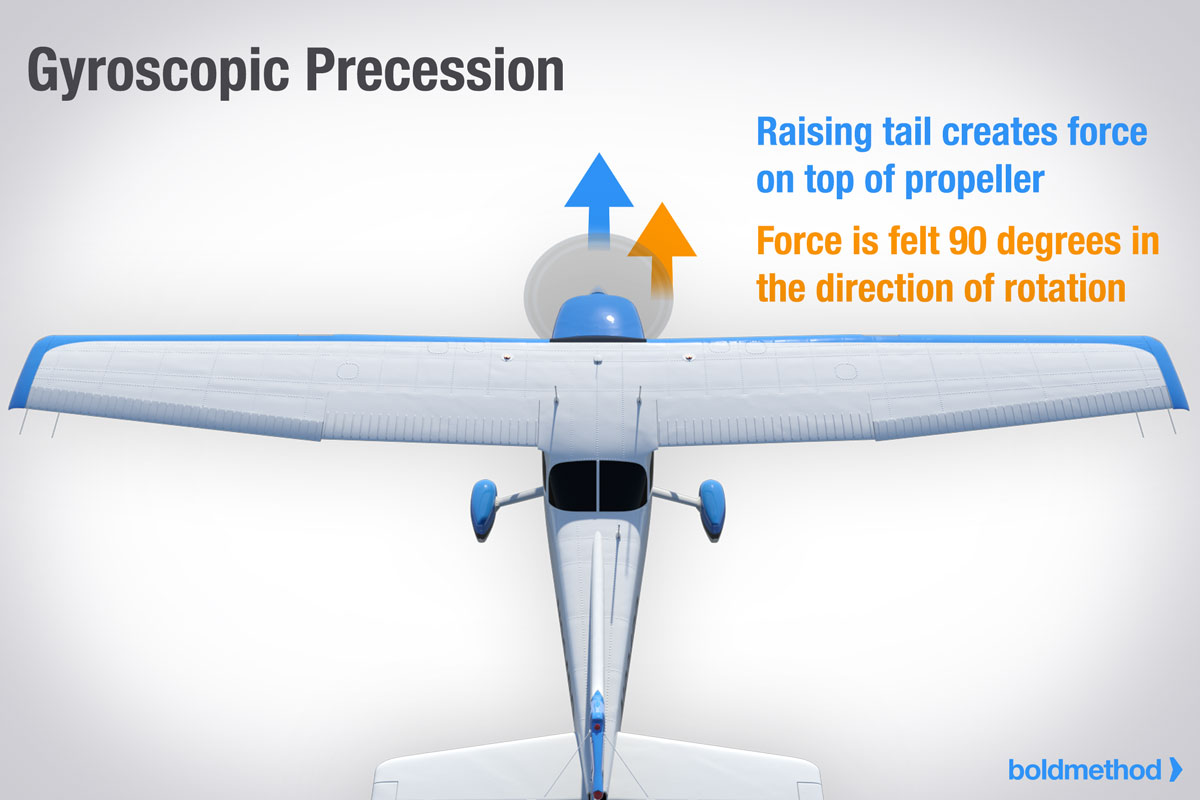|
Similarly to Torque, this effect - Gyroscopic Precession - relates directly to the fact that the propeller is a large spinning mass on the front of the aircraft. This large spinning mass acts as a gyroscope, exhibiting properties of one including precession.
This effect manifests itself when attempting to raise or lower the tail of the aircraft - for instance, attempting to raise the tail (pitch down) will cause a mildly delayed force on the right side of the propeller. This, as a result, causes the aircraft to attempt to yaw to the left. Overall, all four of these forces - torque, P-factor, spiraling slipstream, and gyroscopic precession - lead to a strong necessity when flying to apply greater and greater amounts of right-rudder, especially as airspeed decreases and angle of attack increases.
|
Gyroscopic Precession on a propeller.
https://cdn.boldmethod.com/images/learn-to-fly/aerodynamics/why-you-need-right-rudder-on-takeoff/gyroscopic-precession-takeoff.jpg |
Create a free web site with Weebly
